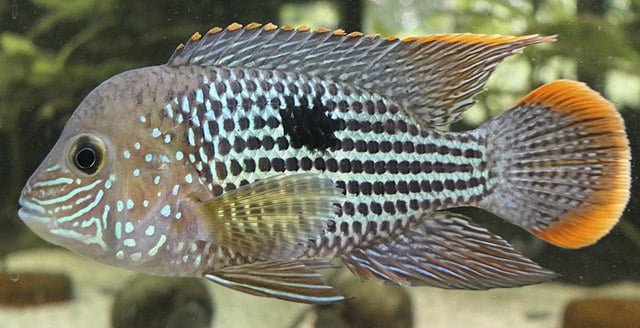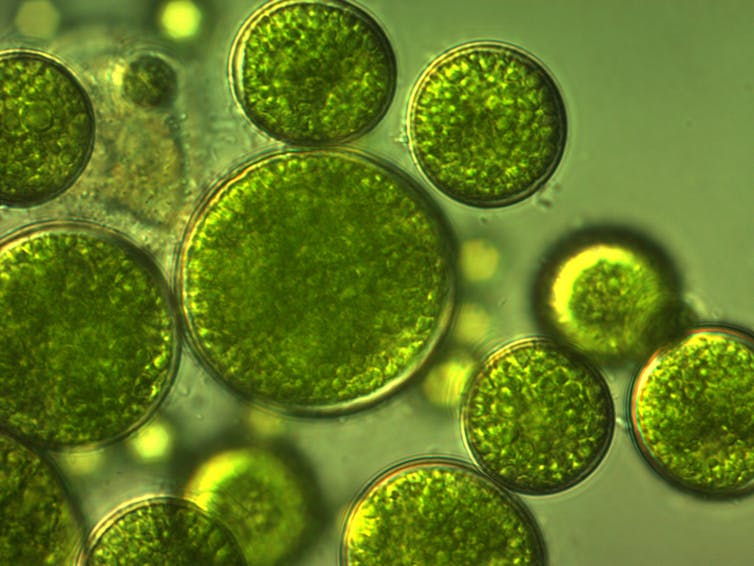USA.- Continuity is key when it comes to growing microalgae at the NOAA Fisheries’ Milford Laboratory in Milford, CT. The lab grow lots of it for specific research needs, and maintains a unique collection of microalgal strains developed decades ago that are used by the commercial aquaculture industry worldwide.
Microalgae, or phytoplankton, are the base of the marine food chain. As primary producers they are the first step in the transfer of solar energy up the food web, providing food for many different marine animals, including filter-feeding bivalves or shellfish.
“We are the only facility like this in the world,” said Mark Dixon, who has managed the Milford Microalgal Mass Culture Room for nearly 20 years. “The cultures will grow indefinitely under the right conditions. When we use some for research needs, the culture keeps on growing, like a lawn that gets cut but grows right back. ”
The Microalgal Culture Collection and the Mass Culture Room at the Milford Laboratory, part of the Northeast Fisheries Science Center (NEFSC), are related but unique facilities started in the 1950s. Small-scale microalgal cultures are maintained in one room as a research tool, a highly valued resource to commercial shellfish hatcheries and academic researchers in the form of “starter cultures” in small vials with growing instructions. The culture collection also provides the Mass Culture Room with a ready supply of sterile microalgae to grow as food for shellfish larvae under controlled and repeatable conditions in the lab’s own shellfish research projects.
Algal Archive
The Microalgal Culture Collection is the lab’s algal archive or seed bank, with a focus on growing oysters, clams and bay scallops. Curator Jennifer Alix maintains more than 200 strains in 24/7 climate controlled incubators and a “light-room” full of small flasks and test tubes. Copies of each strain are maintained in three different media for redundancy in this unique algal library as a hedge against equipment failures and unexpected water-quality variations.
“We receive about 80 to100 requests for cultures each year from a variety of users, many of them repeat customers,” Alix said. “Of the 200 plus cultures, about 10 percent are requested on a regular basis. Some requests are for a single culture, while others include a list. Some cultures in the collection are requested for specific research projects, and occasionally we add a new culture for a specific need.”
Alix, who has managed the culture collection for 24 years, works on a small scale, using 125 ml flasks and “agar slants.” Agar slants are test tubes containing agar, a solid gelatin-like substance made from the cell walls of red algae and commonly used to culture microorganisms. Much of her time is spent transferring the cultures to the different media, which she also makes, and keeping them growing.
Stay Always Informed
Join our communities to instantly receive the most important news, reports, and analysis from the aquaculture industry.
Every month Alix transfers the entire collection to one of three media, made with either filtered seawater from Milford Harbor, artificial seawater supplemented with vitamins and trace metals, or an agar slant tube. In this way, the entire collection is replaced every three months and fresh cultures are available. The new cultures are kept in incubators, while the older “parent and grandparent” cultures are kept for nine months or so in climate-controlled conditions.
Mass Culturing
When Dixon, in the Mass Culture Room across the hall, needs specific cultures to grow for lab research projects, he gets the starter cultures from Alix.
The 1,100-square-foot facility is designed for large-scale culture of microalgae under controlled conditions. With a modular design to adapt to changing research needs, the room has its own lighting, climate control, seawater filtration systems, and air and carbon dioxide controls.
Up to 36 “carboys,” 20-liter glass bottles with narrow necks, and four 1000-liter open tanks are available for growing large volumes of specific microalgal cultures. The cultures are used for nutritional and biochemical studies, experiments on harmful algal interactions with mollusks, and for feeding live shellfish and finfish in the lab’s research programs.
“In some ways we have changed very little since the day we started the culture facilities more than 50 years ago,” Dixon said of the continuity in the cultures over decades and in the staff who maintain them. “The current practices, scientific products, and services are a continuation of the groundbreaking work done in the past. But at the same time, with some careful tweaking in the last 10 years or so, we are also providing an adaptive and responsive contemporary research tool.”
A suite of analytical instruments, microscopes, flow cytometers, and instruments to evaluate chemical properties support the work done in the Mass Culture Room. The demands for pure and controlled culture conditions are essential for the scientific integrity of experiments, ranging from biochemical analyses to shellfish nutrition and disease studies. But not everyone needs this level of sophistication.
“Some of our customers don’t need to maintain their own cultures for one experiment or for a short period of time,” Dixon said. “Sometimes they just need more biomass. We have the capability to grow microalgae in large open containers similar to those used in shellfish hatcheries, and a greenhouse is available for large scale work when needed.”
More commonly, three to ten strains of microalgae are growing in the Mass Culture Room at the same time. The reason: different types and sizes of microalgae are needed for different shellfish species at different stages in their development.
Recent projects
That was the case for a collaborative project involving Milford Lab researchers and scientists at the University of Connecticut and Stony Brook University in New York. The team needed a dozen different algal species, in large amounts, within the same week. Another group received a federal grant to develop biofuels. Milford Lab provided the starter cultures, expertise and some space to get the project going.
The modular and adaptable nature of the Mass Culture Room allows for a scientist at Milford to work with in-house and external colleagues, including many students and international researchers, on a wide variety of projects. Recent work has supported research on shellfish immune response, shellfish probiotics, ocean acidification, shellfish genetics, harmful algal blooms, and food palatability.
The most recent collaboration in the Mass Culture Room presented a departure from tradition. A portion of the room was temporarily turned into a kelp nursery for a project with Branford, CT-based Greenwave, an environmental nonprofit organization focused on 3D ocean farming. It turns out seaweeds, which are macroalgae, thrive in the same conditions as microalgae, making the controlled systems in the Mass Culture Room ideal for small-scale seaweed research.
At the moment, Dixon is preparing for a collaborative study involving Milford Lab researchers and colleagues on Long Island who are interested in seeing what effects ocean acidification has on blue mussels. Different strains of algae have to be grown for conditioning the brood stock, and once the mussels have spawned, to feed the larval mussels as they develop.
The two culture facilities also serve as a teaching tool. Each winter, the Milford Microalgal Culture Workshop is offered free to a dozen or so people who work in commercial shellfish hatcheries or researchers throughout the country interested in learning how to grow microalgae to feed their shellfish stock. The demand this year resulted in two workshops, each featuring lectures and hands-on activities over two days, in late January and early February.
Educators also take advantage of this resource, requesting information and cultures for classroom activities and arranging visits, especially during the Milford Laboratory’s annual Open House in October.
Source: NOAA
Editor at the digital magazine AquaHoy. He holds a degree in Aquaculture Biology from the National University of Santa (UNS) and a Master’s degree in Science and Innovation Management from the Polytechnic University of Valencia, with postgraduate diplomas in Business Innovation and Innovation Management. He possesses extensive experience in the aquaculture and fisheries sector, having led the Fisheries Innovation Unit of the National Program for Innovation in Fisheries and Aquaculture (PNIPA). He has served as a senior consultant in technology watch, an innovation project formulator and advisor, and a lecturer at UNS. He is a member of the Peruvian College of Biologists and was recognized by the World Aquaculture Society (WAS) in 2016 for his contribution to aquaculture.




